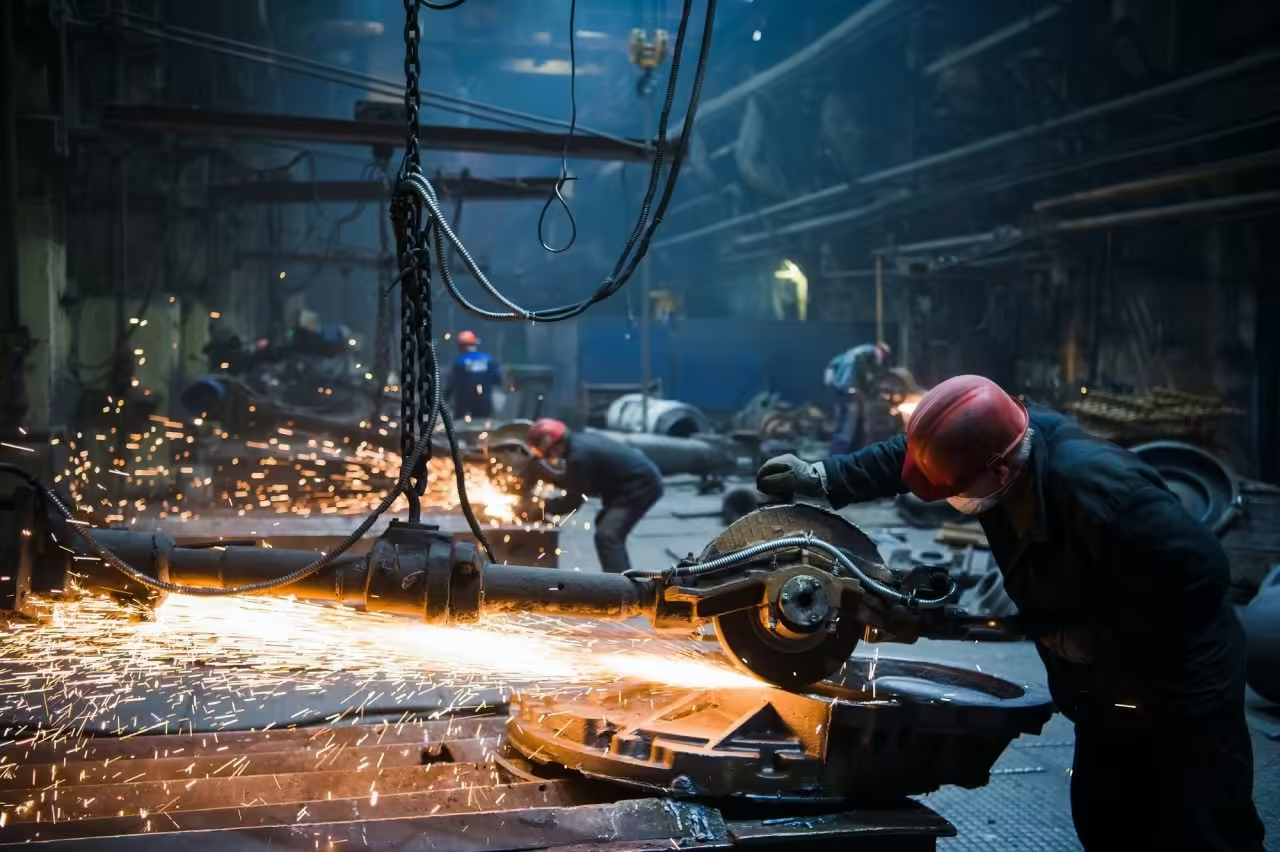Introduction
In the era of rapid industrial development, the demand for efficient and flexible material handling solutions has skyrocketed. Mobile conveyors, as a crucial part of modern logistics and manufacturing, are experiencing a profound transformation. This blog post will delve into the market overview, technological advancements, competitive landscape, and future trends of the mobile conveyor industry, providing valuable insights for industry players and investors.
1. Market Overview
1.1 Market Size and Growth
The global mobile conveyor market has witnessed remarkable growth in recent years, driven by the integration of technologies such as artificial intelligence, 5G, and the Internet of Things (IoT). According to data from Straits Research, the global mobile conveyor market was valued at approximately $4.32 billion in 2023, and it is projected to reach $9.9 billion by 2032, with a compound annual growth rate (CAGR) of 9.65% . The main growth drivers include:
– **Rising demand for e – commerce and intelligent warehousing**: The booming e – commerce industry has led to an exponential increase in the demand for efficient and flexible automation solutions in warehousing and logistics. Mobile conveyors are widely used in these areas to improve efficiency and reduce labor costs.
– **Accelerated industrial automation trend**: The manufacturing industry’s pursuit of higher production efficiency and lower labor costs has spurred the adoption of mobile conveyors to achieve automated and intelligent production processes.
– **Integration of AI and robotics technology**: The continuous advancement of artificial intelligence technology has enabled mobile conveyors to possess stronger environmental perception and decision – making capabilities, expanding their application scenarios and performance.
– **Rising labor costs and labor shortages**: In many countries, the increasing labor costs and aging population have led to labor shortages. Enterprises are turning to mobile conveyors to fill this gap.
1.2 Regional Insights
– **Europe**: As the most important market for mobile conveyors, Europe is expected to maintain a compound annual growth rate of 17.3% during the forecast period. The high level of industrial automation in Europe, especially in the automotive and pharmaceutical industries, drives the growth of the mobile conveyor market.
– **North America**: Logistics giants such as Amazon are leading the deployment of mobile conveyors in North America. The significant growth in this region is attributed to the surge in the adoption of mobile conveyors by manufacturers. The cost of deploying mobile conveyors is much lower than that of employees’ salaries and other related benefits, which promotes the market growth. Additionally, the wide – spread use of mobile conveyors by logistics industry veterans and the large – scale deployment by market leaders for intermediate material transportation are also contributing factors. Moreover, the rapid technological adoption, the presence of major manufacturers in the region, and the substantial financing provided by regulatory agencies for the construction of automated warehouses and distribution centers all contribute to the market expansion .
– **Asia – Pacific**: The Asia – Pacific region is the fastest – growing region, with a projected CAGR of 20.3% during the forecast period. The continuous expansion of the e – commerce sector in Asia – Pacific countries, especially China, has driven the application of mobile conveyors in inventory management. E – commerce companies are deploying mobile conveyors in warehouses to automate internal logistics operations, including picking, sorting, and palletizing. For example, in October 2018, Alibaba Group Holding Limited, a leading e – commerce and retail company in China, opened a warehouse with more than 700 mobile robots to meet the huge demand during the company’s annual shopping festival, “Double Eleven” .
– **Middle East and Africa**: The continuous strengthening of infrastructure construction in the Middle East and Africa is expected to drive moderate growth in the mobile conveyor market. Countries in the Gulf Cooperation Council, Turkey, and Israel are emphasizing the development of smart factories and Industry 4.0, which will have a positive impact on the market growth.
2. Technical Innovations
The continuous progress of technologies such as robotics and artificial intelligence has brought about significant changes to the mobile conveyor market. These advancements have made it possible to develop more sophisticated mobile conveyors that can perform tasks with minimal human intervention.
– **Improved sensor technology**: The development of advanced sensor technologies, including cameras, ultrasonic sensors, and LiDAR systems, has enhanced the environmental perception and navigation capabilities of mobile conveyors. This allows them to operate more safely and efficiently in complex environments.
– **AI algorithms and machine learning**: AI algorithms and machine learning techniques enable mobile conveyors to learn and adapt to dynamic environments. They can analyze real – time data and make intelligent decisions, further improving their performance.
– **Computer vision**: The application of computer vision technology allows mobile conveyors to recognize objects, people, and gestures, enabling more complex interactions. For instance, Boston Dynamics’ Spot robot, which is equipped with advanced sensors and AI algorithms, can be used for inspection and monitoring tasks.
– **Intelligent navigation systems**: Intelligent navigation systems provide power for the path planning, obstacle avoidance, and adaptation to changing environments of mobile conveyors used in industrial and warehouse settings. This technology ensures that mobile conveyors can move smoothly and efficiently in various environments.
– **Cloud computing**: Cloud computing supports real – time data processing, remote monitoring, and control, which helps to improve the operational efficiency of mobile conveyors. Through cloud – based platforms, users can remotely monitor and manage their mobile conveyor systems, reducing downtime and maintenance costs.
3. Application Scenarios
Mobile conveyors are widely used in various industries, each with its unique requirements and challenges.
– **Mining industry**: In the mining industry, mobile conveyors are used to transport loose materials such as coal, ore, and minerals from the mining site to the processing plant. They are also used in underground mines to transport materials over long distances. The ability of mobile conveyors to adapt to complex and rugged terrains makes them an ideal choice for mining applications .
– **Port industry**: Ports are major hubs for global trade, and mobile conveyors play a crucial role in the loading and unloading of goods. They can handle a wide range of cargo, including bulk cargo, containers, and packaged goods. Mobile conveyors can be easily reconfigured to meet the changing needs of the port, improving the efficiency of cargo handling and reducing labor costs.
– **Logistics industry**: The logistics industry is one of the largest users of mobile conveyors. They are used in warehouses, distribution centers, and transportation hubs to move goods quickly and accurately. Mobile conveyors can be integrated with other logistics equipment, such as forklifts and automated storage and retrieval systems, to create a seamless logistics operation.
– **Manufacturing industry**: In the manufacturing industry, mobile conveyors are used in various processes, including material handling, assembly, and packaging. They can improve the efficiency of production lines, reduce production time, and enhance product quality. For example, in the automotive manufacturing industry, mobile conveyors are used to transport car parts between different workstations.
– **Construction industry**: In the construction industry, mobile conveyors are used to transport building materials such as sand, gravel, and concrete. They can be easily moved around the construction site, reducing the time and effort required for material handling.
– **Agricultural industry**: In the agricultural industry, mobile conveyors are used for tasks such as grain handling, silage transportation, and fertilizer distribution. They can improve the efficiency of agricultural operations and reduce labor intensity.
3. Competitive Landscape
The mobile conveyor market is highly competitive, with a mix of large – scale enterprises and small – and medium – sized enterprises.
– **Large – scale enterprises**: Companies such as Caterpillar, Komatsu, and Siemens are leading players in the mobile conveyor market. They have strong R & D capabilities, extensive product portfolios, and a global presence. These companies focus on high – end applications and provide customized solutions for their customers.
– **Small and medium – sized enterprises**: There are also a large number of small – and medium – sized enterprises in the market. They often specialize in specific applications or regions and offer more cost – effective solutions. These enterprises are more flexible and can quickly respond to market changes.
– **Foreign brands**: Foreign brands such as Demag and Sany have a certain market share in the high – end market. They bring advanced technologies and management experience to the market, but they also face fierce competition from domestic enterprises.




